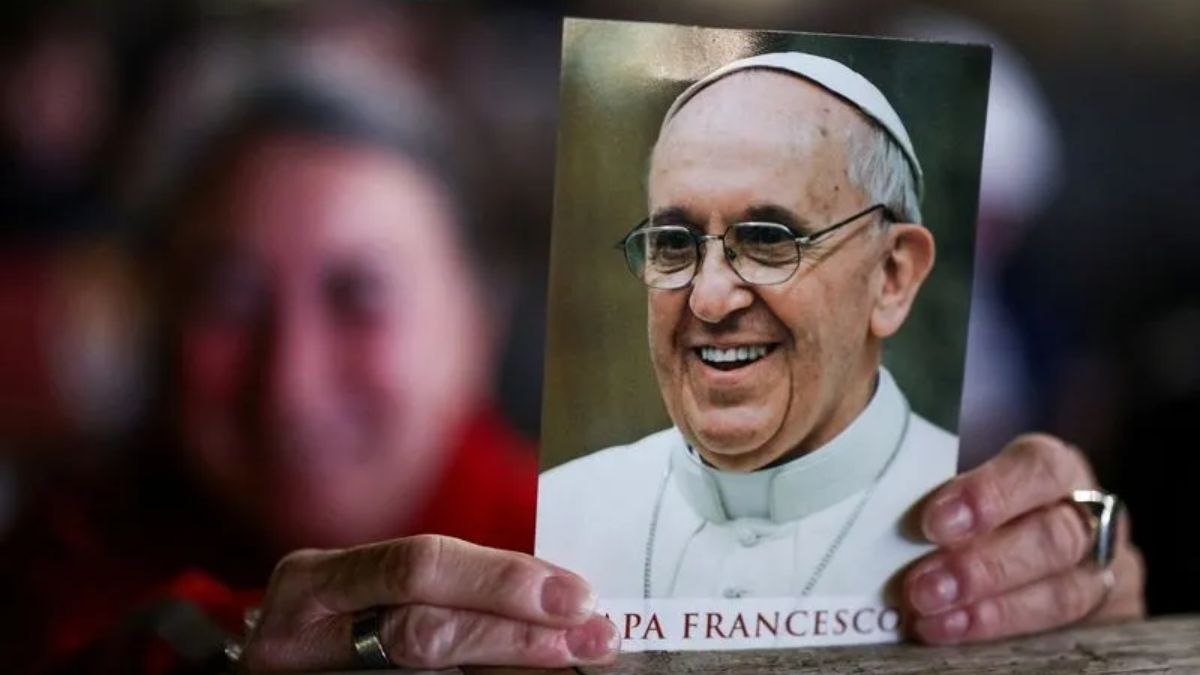Not all love is meant to be. Sometimes, when it ends, it pushes you toward something much bigger.
Long before he became the spiritual head of over a billion Catholics, he was Jorge Mario Bergoglio—a quiet boy from Buenos Aires with a soft spot for the girl next door. He once wrote her a love letter and told her, quite seriously, that if she didn’t marry him, he’d become a priest.
He meant it.
That 12-year-old boy grew up to become Pope Francis, the first Latin American leader of the Catholic Church.
The 88-year-old pontiff passed away on Easter Monday, just a day after delivering his final blessing from the balcony of St Peter’s Basilica. He battled prolonged illness before he suffered a final cerebral stroke.
As the world remembers him, it’s worth going back to where it all quietly began—with a childhood crush that may have changed the course of his life.
Love, rejection, & a higher calling
As a 12-year-old boy growing up in the quiet Flores neighbourhood of Buenos Aires, Jorge Mario Bergoglio fell for the girl next door—Amalia Damonte.
Decades later, in an interview with the AP, 76-year-old Amalia recalled growing up with the boy who was elected the Pope in 2013.
“He had a crush on me, you know. We used to play on the streets here. It was a quiet neighbourhood then, and, well, he was very nice,” she said.
Amalia recalled how one day (sometime in 1948 or 1949), young Jorge gave her a letter, a love note of sorts. “I remember perfectly that he had drawn me a little white house, which had a red roof, and it said, ‘this is what I’ll buy when we marry,’” Amalia recalled. “‘If I don’t marry you, I’m going to be a priest,’ he wrote.".
“Luckily for him, I said no,” she joked. “These were childish things, nothing more.”
But not everyone saw it that way. Her parents were not amused. Speaking from her home, just four doors down from where the Pope once lived, Amalia said her mother stepped in to end the budding romance.
“My mom broke it off. Good Lord. She came to get me at school and said, ‘So, you’re getting letters from a boy?’”
From that point on, her parents kept them apart. The Bergoglio family eventually moved away from Membrillar Street. Amalia left too—marrying, raising a family, and later returning to her childhood home.
She never reached out to her childhood friend again. But she followed his journey from afar, as he climbed the ranks of the Church, and eventually, became Pope Francis.
From Buenos Aires to Vatican
After his childhood romance came to an end, Bergoglio immersed himself in studies. He studied Chemistry before he chose the priesthood. He then eventually joined the Society of Jesus and became a Jesuit priest in 1969.
Known for his quiet strength, simplicity, and advocacy for the poor, he soon emerged as a respected voice within the Church. In 1998, he was appointed Archbishop of Buenos Aires, and just three years later, he was made a cardinal.
Then came the moment that would place him on the world stage. In 2013, after the resignation of Pope Benedict XVI, Bergoglio was elected the 266th pope of the Roman Catholic Church. He chose the name Francis, in honour of St Francis of Assisi—the saint known for his compassion, simplicity, and love for the poor
The news stunned many—including Amalia.
“I froze in front of the television,” she said. “I couldn’t believe that Jorge was the Pope!” Like millions across Latin America, she celebrated the election of the region’s first pope.
“He is a good man, the son of a working-class family,” she said. “I hope he can achieve all the good that he holds in his heart.”
As Pope, Francis became known for breaking with tradition. He chose modest living quarters over the grand papal apartments in the Apostolic Palace. He washed the feet of prisoners and migrants, earning him the nickname “the pope of the slums”.
The pontiff often spoke openly about climate change, inequality, and the need for a more inclusive Church.
In his last message, he called for the end of the Ukraine war and peace in the entire world.
“There can be no peace without freedom of religion, freedom of thought, freedom of expression and respect for the views of others. Nor is peace possible without true disarmament! The requirement that every person provide for their defence must not turn into a race to rearmament,” Pope Francis said in his Easter message.
With input from agencies
)